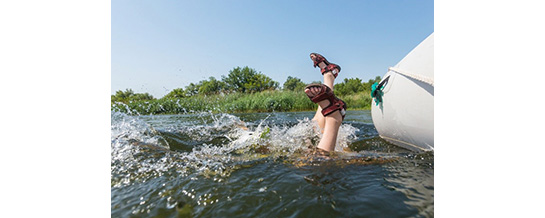How to Care for Your Child with Submersion Injury
This leaflet will provide you with information about submersion injuries causes, symptoms, diagnosis, treatment and home care advice.

What are submersion injuries?
Submersion happens when your child experiences breathing difficulty from being under any kind of liquid, commonly water.
What are the causes of submersion injuries?
Most injuries occur due to inadequate supervision of toddlers and young children around water sources, for example (bathtub, water buckets and swimming pools)
What are the symptoms of submersion injuries?
After submersion, your child might
- Be unconscious initially
- Appear confused
- Have abnormal breathing or difficulty of breathing
- Have a bluish discoloration of face or body
- Have a severe cough
- Be shivering from low body temperature
- Have abnormal movements (seizures) from low oxygen content in the body
- Be vomiting after the incident
How is a submersion injury diagnosed?
The doctor will ask a few questions about your child’s health and examine your child. Your doctor will decide if further investigation or blood tests are required.
How is a submersion injury treated?
- The management plan depends on the severity of the submersion injury. This is different from one case to another.
- Wet clothes would be removed off of the child and then try to make sure that the child is warm using thermal blankets.
- After the initial evaluation, your child would be observed for some time in the hospital.
- If there are no concerns after this period of observation, your child will be discharged home safely.
- Children who remain with concerning symptoms most likely will be kept for a longer period of observation in the hospital
- Some treatment options may include:
- Oxygen supplementation when needed and breathing support to help the child’s breathing
- Blood test and chest x-ray.
Home care advice
Prevention measures at home
Prevention is the most effective way of decreasing injuries from water submersion. Please follow these safety steps at home:
- Ensure adequate adult supervision at all times near water (bathtub, swimming pools, lakes, water buckets).
- Ensure installation of four-sided fencing around residential swimming pools.
- Empty bathtubs or water buckets after use. If your child has a risk factor, for example, a seizure disorder, use a shower bath instead of a bathtub and keep easy access to the inside of the bathroom at all times.
- Use life jackets during swimming.
- Always ensure direct adult supervision during swimming lessons.
- It is always recommended to learn basic CPR skills and initiate resuscitation at the injury site.
Observation at home
Observe your child for any signs of worsening like:
- Abnormal behavior.
- Breathing difficulty.
- Abnormal movements or confusion.
Go to the Emergency Department if your child:
- Has any signs of difficulty breathing (fast, shallow or abnormal breathing).
- Has a change in his/her mental status for example, confusion or abnormal movements for example, seizures.
- Complains of fast heartbeat, chest pain or loss of consciousness.
- Develops a fever.

